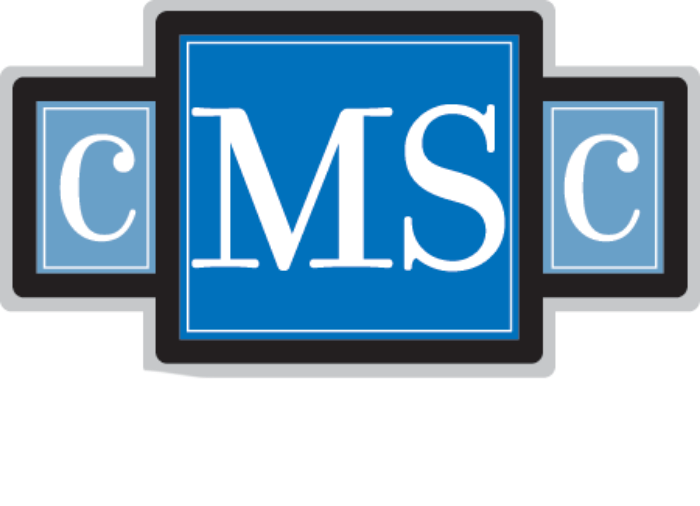Practice Points
- Osteopenia and osteoporosis have a higher prevalence and earlier onset in people with multiple sclerosis (MS) compared with the general population.
- There is insufficient bone health risk assessment, screening, and management; there is also an absence of health care and lifestyle self-management information about the risk and prevention of poor bone health for people with MS.
- Health care professionals need improved multidisciplinary coordination and support, clinician management guidelines, training, and educational resources about bone health.
Multiple sclerosis (MS) is a chronic inflammatory autoimmune disease characterized by demyelination and axonal degeneration in the central nervous system, leading to many symptoms and resulting disabilities. Among the many consequences associated with MS, such as mobility impairment, cognitive dysfunction, and fatigue, there is a growing recognition of its impact on musculoskeletal health, particularly regarding osteoporosis, falls, and fracture risk,1-3 which pose significant challenges to an individual’s quality of life.4-7 Symptoms such as imbalance, muscle weakness, uncoordinated movements, numbness, impaired vision, and vertigo predispose individuals to falls and subsequent fractures.8,9 Epidemiological studies have shown that people with MS have a higher prevalence of osteoporosis10,11 and increased risk of fracture12,13 consistent with low bone mineral density.14 The prevalence of osteoporosis was recently reported to be 30% in people with MS compared with 9% in age- and sex-matched healthy controls under 65 years of age (median 28 years; range, 35-57 years) in an Austrian study.15 More broadly, a meta-analysis of 29 studies of people with MS, with a mean participant age of 41.5 years, reported the prevalence of osteoporosis at 17% and the prevalence of osteopenia at 43%. The prevalence of osteoporosis in adults over 50 years from the general population in high-income countries (ie, Australia, Europe, and the United States), ranged from 3% to 8% in men and 16% to 33% in women.16 This elevated risk stems from a combination of factors intrinsic to the disease process and secondary to its clinical manifestations. One example of this combination is that people with MS are often prescribed medications that may reduce bone density, including glucocorticoids, immunomodulators, antidepressants, anticonvulsants, anxiolytics, opioids, and antipsychotics.1
Despite the substantial impact of osteoporosis on people with MS, there is a gap in current practice among health care professionals (HCPs). A qualitative study of 27 women with MS that examined knowledge of osteoporosis and experience with HCPs reported that several women answered no when asked, “Has anyone involved in your care spoken with you about osteoporosis?”17 Many women indicated that their physicians had suggested supplementation with calcium without an explanation for the recommendation.17 A Turkish study that assessed 325 people with MS reported that participants with MS had minimal knowledge of osteoporosis; however, participants with any fall risk had higher osteoporosis knowledge than those with no fall risk, suggesting clinicians may reactively provide osteoporosis education, rather than providing this information as a preventive measure.18 In the general population, studies of HCPs conducted in Canada, India, and Iran demonstrated insufficient knowledge regarding osteoporosis diagnosis and management, osteoporosis medications, and preservation strategies, indicating that for HCPs, poor understanding of bone health in people with MS is a global problem.19-21 Given that osteopenia and osteoporosis can be modified by lifestyle and pharmacological interventions, it is imperative that bone health be addressed by HCPs managing MS for their patients.22-24
To address the gaps in the literature, we aimed to assess the HCPs’ knowledge about bone health specific to patients with MS and their current bone health practices, including in educating, evaluating risk, referring, and managing bone health. Specifically, we sought to (1) evaluate the current practices among HCPs for whom bone health in people with MS should be a consideration, including MS specialists, general practitioners (GPs), endocrinologists, and physiotherapists or exercise physiologists; and (2) identify the facilitators and barriers to improving bone health and the detection and management of osteoporosis in people with MS.
Methods
Research Design
This qualitative study investigated perspectives of HCPs involved in the health care of people with MS. This research was guided by framework analysis, which includes the subjective experience of the research participants and concepts and issues identified in the literature.25 The research team included MS, musculoskeletal, and health care researchers, clinicians and trainees, as well as people with MS, all of whom provided expert input into the development of the interviews, validation of the analysis, and drafting/editing of the results. All interviews were undertaken by a trainee clinician (L.A.J) under the supervision of senior researchers with qualitative research expertise (L.G., A.Z.).
Recruitment
HCPs were recruited through network contacts, via email and phone calls (convenience sample), between December 2022 and March 2023. Inclusion criteria were access to an internet connection and Zoom, and being a registered and practicing HCP, including neurologists, endocrinologists, MS nurses, general practitioners (GPs), and physiotherapists/exercise physiologists. With the exception of neurologists and nurses, participants were not required to be managing the health care of people with MS at the time of the interview, but were in health care roles where they could encounter patients with MS. Study ethics approval was granted by the Monash Health Human Research Ethics Committee (project number: RES-22-0000579A). Participants provided recorded, verbal informed consent.
Data Collection
Interviews were conducted and recorded via Zoom. Interviews followed a semistructured interview guide consisting of questions about general demographic characteristics, knowledge of bone health and MS, current practices (including use of the Fracture Risk Assessment tool [FRAX], an international reference standard tool to assess osteoporotic fracture risk26), barriers and facilitators in managing bone health in people with MS, and recommendations to improve practices (see Grech Supplemental at the bottom of this article). Responses were unstructured, and participants were prompted with further questions as required. Deidentified interviews were transcribed using Otter.ai and reviewed for accuracy by the interviewing researcher (L.A.J.).
Data Analysis
Transcripts were stored and coded in NVivo 12 Plus (QSR International). Transcripts were coded by 1 author (L.A.J.) and checked for coding accuracy and quality by a second author (L.G.). The data were independently analyzed by these 2 authors using a framework developed a priori by the researchers from research literature concepts, qualitative interviews with people with MS, and the research goals. The framework utilizes subthemes specific to the health professional where relevant and was expanded to incorporate emergent themes and subthemes consistent with framework analysis.25 Quotes were grouped according to themes and are identified by HCP. The approximate scale of the proportion of participants that identified with a theme or sentiment is as follows: a few, less than 25%; some, 26% to 39%; half, 40% to 60%; many, 61% to 75%; and most, more than 75%.27,28 Given the qualitative nature of this work, these percentages should be used as a guide to the level of response consistency and not for broad generalization.
Results
Participant Characteristics
Interviews were conducted with 32 Australian HCPs, including 4 neurologists, 8 endocrinologists, 9 MS specialist nurses, 6 general practitioners, and 5 physiotherapists. The analysis included 31 interviews due to a technical error with the interview recording with 1 of the physiotherapists. HCPs worked in settings ranging from public hospitals to private practice, predominantly in the states of Victoria and New South Wales. A similar number of men and women participated in the study, and most were between the ages of 30 and 49 years (Table 1). The average interview duration was 26.5 minutes (range, 12-48 minutes), with the shortest interview times among the neurologists (median [M] = 17.8 minutes) and the longest among the nurses (M = 33.1 minutes).
Knowledge About Bone Health Specific to MS
Prevalence and MS-specific knowledge. None of the HCPs interviewed knew the prevalence of osteoporosis in people with MS. When asked if osteoporosis was more common in people with MS, a few MS nurses and half of the GPs were certain there was an increased osteoporosis risk in people with MS (Table 2). Most HCPs acknowledged knowing little about bone health related to MS specifically.
MS risk factors. HCPs identified various risk factors associated with lower bone density in individuals with MS. These included mobility issues, higher disability, reduced activity (particularly weight-bearing exercise), increased falls leading to fracture risk, inadequate vitamin D, and low calcium intake. Half of the MS nurses recognized the impact of MS diets on vitamin deficiency as a risk factor. The high use of glucocorticoids for MS relapses was identified as a risk factor for osteoporosis. HCPs were unaware of specific guidelines for managing bone health in people with MS.
Current Management of Bone Health in People With MS
Information and Education
Education about bone health, osteopenia, and osteoporosis. None of the HCPs reported providing specific education on bone health, osteopenia, or osteoporosis in the context of people with MS. Half of the neurologists responded to questions raised by their patients with MS and referred them to their GP for further information. GPs noted that bone health was not commonly addressed in the context of MS care.
Lifestyle recommendations for bone health. MS nurses, neurologists, and physiotherapists commonly provided healthy lifestyle recommendations to people with MS. While most MS clinicians suggested practices beneficial for bone health, such as addressing low vitamin D intake, promoting a healthy diet, and increasing exercise, these recommendations were often framed within the context of improving overall MS outcomes rather than specifically emphasizing bone health. Similarly, physiotherapists focused on exercises that contributed to better bone health and the prevention of falls in people with MS, including strength and balance training and aerobic exercises.
Assessment of Bone Health
MS clinic assessment of risk, mobility, falls, and fractures. Most MS nurses reported that physical assessments were routinely performed at clinic appointments. This was generally in the form of a neurological-focused assessment, most often using the Expanded Disability Status Scale, administered by the clinic neurologists. Nurses were divided when asked if they assessed for injuries, falls, and fractures. Some said they did this routinely, while others probed further only if the patient brought up a decline in mobility or mentioned a fall. None of the MS nurses or neurologists used the FRAX tool to assess absolute fracture risk in people with MS.
Screening for low bone density. All HCPs stated that bone density screening was inadequate in people with MS. Most HCPs considered bone health screening important, and some thought that screening should be initiated earlier for individuals with MS than for the general population. More broadly, suggestions of how often screening should occur ranged from yearly to every 2 years, with a follow-up duration dependent on baseline bone density.
Bone Health Management
Management of bone health and osteoporosis. When asked if management of bone health was adequate for people with MS, responses varied depending on the discipline. Some nurses suggested bone health was not adequately managed and that health care services and management varied by service. Some physiotherapists responded that they did not specifically focus on bone health in clients with MS. Half of the endocrinologists stated that their patients with MS had good osteoporosis management.
Medication management. Most HCPs reported having specific knowledge of and providing monitoring for medications and adverse effects related to their specialty only. For example, MS neurologists and nurses monitored medications related to MS, and endocrinologists monitored osteoporosis medications. Except for endocrinologists, most HCPs did not know which medications negatively impacted bone health other than glucocorticoids. Many MS nurses and neurologists did not inform patients about the potential negative effects on bone health after prescribing or ceasing medication, and none of the MS clinicians had referred MS patients for a bone density scan (ie, dual energy X-ray absorptiometry, DXA) after prescribing or discontinuing medication.
Barriers and Facilitators to Managing Bone Health
Health Care Services Coordination
Health care services limitations. Most MS nurses and neurologists considered bone health screening and management to be the responsibility of GPs. Many MS clinicians reported only seeing people with MS every 6 to 12 months when they were stable and indicated that bone health was not a priority, given limited consultation time. Some MS clinicians reported that the difficulties with mobility and multiple other disease-related factors in patients with more complex MS created a barrier in identifying low bone density.
Who is responsible? Most endocrinologists considered the bone health management role to be multidisciplinary, but indicated that GPs had a pivotal role. There was broad agreement by HCPs that they would liaise with the patient’s GP about issues related to bone health, although a few endocrinologists acknowledged that they communicated with the neurology team rather than the GP. GPs noted that they often focus on other clinical aspects related to MS or the person’s health care more broadly.
Multidisciplinary management. Most HCPs acknowledged the need for multidisciplinary health care to manage bone health in people with MS, including physiotherapy, occupational therapy, dietetics, endocrinology, and podiatry. Some HCPs communicated with other team members, and some deferred to the GP as the communication coordinator. In the management of falls and fractures, many MS nurses and some neurologists highlighted the importance of involving allied health professionals to facilitate physical conditioning and prescribe equipment to prevent falls, such as braces, orthotics, and gait equipment.
Educational Resources
Clinician educational resources. Lack of awareness and information about poor bone health in people with MS were identified as barriers by half of the HCPs interviewed. Some suggested they would benefit from educational resources, such as fact sheets or other written information, online learning modules, or seminars.
Patient educational resources. HCPs were unaware of bone health resources specific to people with MS. Some HCPs, predominantly endocrinologists, suggested that the resources would be similar to those for the general population. HCPs suggested that patient education should be provided by MS community service organizations through webinars, peer support groups, and other communication modalities.
Assessment and Treatment Resources
Guidelines and screening. Most HCPs acknowledged a need for improved practice regarding bone health in people with MS, including standardized pathways to screen and identify patients with MS at risk of medication-related poor bone health. Some nurses and half of the endocrinologists suggested that guidelines for the prevention, detection, and management of osteoporosis in people with MS would be helpful for HCPs.
Management specific to MS. When asked if bone health in people with MS should be treated in the same way or in a different way than the general population, most HCPs pointed to the need for a different approach. Reasons for differences in management included the need for a greater focus on fall risk education and the need for exercise to maintain bone health and improve balance to minimize falls. To support these needs, a referral to an allied health professional was suggested. In contrast, a few HCPs responded that they would treat people with MS no differently than other patients.
Cost and rebates. Most endocrinologists stated that people with MS often pay for bone density scans because they do not meet the criteria for a government (ie, Medicare) subsidized scan; if required, they also believed that some of their patients would also need to pay for medications to maintain or improve their bone density. A few endocrinologists identified the absence of a government subsidy to screen bone density in people with MS as a screening barrier, especially for people of lower socioeconomic status. A few endocrinologists and half of the GPs noted that a government subsidy would assist with better detection of low bone density to enable appropriate management.
Discussion
This research assessed current practices as well as barriers to and facilitators of bone health management across HCPs working with people with MS, including GPs, MS nurses, neurologists, endocrinologists, and physiotherapists. We found (1) HCPs had little knowledge about bone health specific to people with MS; (2) an absence of health care and lifestyle self-management information about risks for poor bone health and prevention; (3) insufficient bone health risk assessment, screening, and management in people with MS; (4) a need for improved multidisciplinary coordination and support; and (5) a need for management guidelines, training, and educational resources for HCPs. Our findings are consistent with previous research where people with MS reported that HCPs did not address osteoporosis in consultations, as well as with research assessing HCPs more broadly that demonstrated insufficient knowledge regarding osteoporosis diagnosis and management, osteoporosis medications, and bone-health preservation strategies.17,19-21
The majority of HCPs acknowledged knowing little about bone health in people with MS, and none of the HCPs interviewed knew the prevalence of osteopenia and osteoporosis in people with MS. Most HCPs were able to identify several risk factors, including reduced mobility, higher disability, reduced physical activity, and inadequate vitamin D and calcium intake. The only treatment HCPs recognized as a potential risk factor for poorer bone health was the high use of glucocorticoids. Although further high-quality research is required to fully understand the impact of medication on bone health in people with MS,1 current research endorses an increased risk of fracture from a number of medications often prescribed for people with MS, including antidepressants, anxiolytics, anticonvulsants, opioids, and antipsychotics.29-33 None of these medications were mentioned as potential risk factors for people with MS by HCPs during the interviews. In Australia, around 35% of people with MS take antidepressants compared with 8% to 10% of the general population.34,35 Further, autologous hematopoietic stem cell transplantation (AHSCT), an increasingly common treatment for MS, has established risks for bone health and fragility fractures.36,37 While guidelines for AHSCT for people with MS refer to concerns about late effects, there is no mention of bone health or associated monitoring requirements.36 This deficit in interdisciplinary knowledge potentially increases the underdiagnosis of osteopenia and osteoporosis.
In our study, HCPs acknowledged that bone health risk assessment, screening, and management were inadequate in people with MS. The reason is multifactorial, including the lack of awareness of the higher prevalence of osteopenia and osteoporosis in people with MS among HCPs, and financial barriers to bone density screening by DXA. The HCPs interviewed were unable to identify any guidelines for bone health management in people with MS. Consistently, we identified limited referral for bone screening for at-risk patients. While guidelines to support bone health management in people with MS are limited,2 an evidence-based guideline that is focused on clinical management of MS exacerbations recommends baseline and annual bone density screening for people who undergo repeated glucocorticoid treatment for MS exacerbations.38
We found that a lack of government-funded bone density screening also limits referral. In Australia, to be eligible for a government-funded DXA scan, a person must be 70 years of age or older, or have 1 of the following: (1) one or more minimal trauma fractures in the past 10 years; (2) be over 50 years of age with early menopause, hypogonadism, prolonged glucocorticoid therapy, celiac disease or malabsorption disorders, rheumatoid arthritis, primary hyperparathyroidism, hyperthyroidism, chronic kidney or liver disease, or androgen deprivation therapy.39 Most people with MS do not fall into any of these categories, despite evidence of a younger age of osteopenia and osteoporosis onset.10 As such, they may be overlooked or not able to undergo a DXA scan due to the high out-of-pocket cost. Endocrinologists noted that this creates a health care barrier and a socioeconomic divide, placing people with MS with lower socioeconomic status at risk of poorer health outcomes,40,41 including comorbidity and mortality. Musculoskeletal conditions are recognized as being among the most prevalent and costly comorbidities in people with MS, resulting in high losses to productivity and resource costs.42-44 There is a clear need to proactively deliver health care services to prevent bone health degeneration.
We found that a lack of multidisciplinary coordination among HCPs contributes to the barriers to patient education, assessment, and management of bone health in people with MS. Most HCPs who treat patients with MS considered bone health management to be the responsibility of the GP. Improved multidisciplinary health care for people with MS has been previously called for with the proposed development of MS care units.45 Examples from cancer and chronic kidney disease clearly provide evidence that multidisciplinary health care teams result in better health outcomes in people with multimorbidity.40,46,47 The National Comprehensive Cancer Network Task Force was formed to ensure that multidisciplinary health care teams have guidelines to provide optimal assessment and treatment of bone-related issues in patients with cancer.46 Multidisciplinary health care teams managing patients with cancer have resulted in significant reductions in skeletal complications, bone pain, and fracture risk, as well as improved quality of life.47 Similarly, multidisciplinary health care teams have been shown to be effective in patients with chronic kidney disease.40
We have provided recommendations to improve bone health assessment and management for people with MS, focusing on systemic-level improvements and support for clinicians and MS community services and people with MS (Table 3).
Strengths and Limitations
This is the first study to assess the knowledge and current practices of HCPs regarding bone health in people with MS. We interviewed a range of HCPs who might be expected to support education, assessment, and management of bone health in people with MS. Data saturation for broad themes was achieved in our sample of HCPs. Similarly, data saturation for themes and subthemes within each health care specialization was generally reached. However, we acknowledge that our sample of only 4 neurologists may have limited the collection of more nuanced information. Similarly, HCPs were interviewed about their experience within an Australian context, and we cannot be certain that this translates within the context of other countries; however, research suggests that osteoporosis in people with MS is an international concern.10 Although participants were recruited through researcher network contacts, our sample included a broad range of ages and experiences.
Conclusions
Our qualitative research study interviewed HCPs and determined their knowledge of bone health in people with MS, as well as their current bone health assessment and management practices. We identified a need for improved knowledge, and HCPs expressed the need for educational resources on bone health specific to people with MS, as well as guidelines to identify risks and pathways to assess and manage bone health, osteopenia, and osteoporosis. We also found a need for improved multidisciplinary support for bone health among HCPs, including clear role delineation for patient education, referral, assessment and management, and improved public health care funding for adequate screening and management of this at-risk group.










